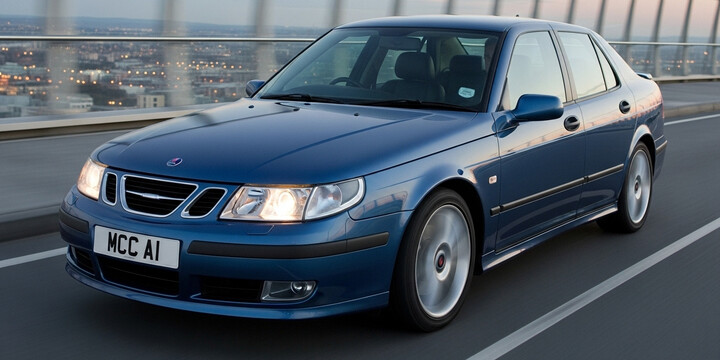
SAAB 9-5 (2006-09) 5DR ESTATE 2.3T 185 LINEAR BIOPOWER
The SAAB 9-5 (2006-09) 5DR ESTATE 2.3T 185 LINEAR BIOPOWER is a stylish and practical estate car that offers a solid balance of comfort, performance, and utility. This model is well-suited for families, retirees, or anyone needing extra space for luggage, sports gear, or daily errands. Its sleek wagon design makes it stand out in the estate car market, providing ample cargo capacity while maintaining a refined appearance. The 2.3T engine with 185 horsepower, combined with SAAB's renowned driving experience, makes it a reliable choice for daily commuting or longer trips, especially as it features BioPower technology that offers flexible fueling options and improved fuel economy.
What makes the SAAB 9-5 estate particularly interesting is its reputation for safety, Scandinavian design, and a smooth ride that appeals to drivers who value comfort and durability. It has a loyal following among those who appreciate a vehicle that is both distinctive and practical, with modern features for its era. Compared to rivals, the SAAB 9-5 estate is often praised for its solid build quality and engaging drive. With an average mileage of around 147,000 miles and just over 1.7 previous owners, it presents a compelling choice for those seeking a used estate that combines style with dependability. If you're in the market for a versatile car that stands out from typical family estates, the SAAB 9-5 (2006-09) 5DR ESTATE 2.3T 185 LINEAR BIOPOWER is worth considering for its unique blend of design, comfort, and practicality.

average use

The data indicates that, for the Saab 9-5 (2006-09) 5DR Estate 2.3T 185 Linear BioPower models, the most recent recorded mileage is concentrated entirely within the 160,000 to 170,000-mile range. This suggests that, within the sample, these vehicles tend to have reached this mileage bracket, highlighting it as a typical mileage level for recent recordings. There are no records of these vehicles having higher or lower recent mileages, which could imply limited variation or lower overall usage beyond this range in the dataset we have.

vehicle values

The data indicates that for the SAAB 9-5 (2006-09) 5DR ESTATE 2.3T 185 LINEAR BIOPOWER model, the private sale price consistently falls within the £1,000 to £2,000 range, representing 100% of the valuation for this vehicle. This suggests a relatively narrow market value bracket for private sales of this specific model, potentially reflecting its age, condition, and market demand in the UK.

production years

The data indicates that all sampled vehicles of the SAAB 9-5 (2006-09) 5DR ESTATE 2.3T 185 LINEAR BIOPOWER were manufactured in 2008. This suggests a concentrated production period for this particular model, with no vehicles from other manufacturing years represented in the sample. It may reflect a specific batch or limited production window during 2008 for this model.

colour popularity

The data indicates that all recorded vehicles of the Saab 9-5 (2006-09) 5-door estate with a 2.3T 185 Linear Biopower are exclusively painted in black. This suggests that black is the dominant or possibly the only paint colour chosen for this particular model in the sample, highlighting a preference or standard colour option for this vehicle during that period.

ownership cycle

The data indicates that all registered keepers for the 'SAAB 9-5 (2006-09) 5DR ESTATE 2.3T 185 LINEAR BIOPOWER' vehicles in the sample have only had one registered keeper each. Specifically, 100% of the vehicles examined have been recorded with a single keeper throughout their registration history. This suggests that, within this sample, the vehicle has not changed ownership multiple times, potentially reflecting consistent ownership or limited resale activity for this model.

engine choices

The vehicle data indicates that all models of the Saab 9-5 (2006-09) 5DR Estate 2.3T 185 Linear BioPower are equipped with an engine capacity of 1985cc, which accounts for 100% of the sample. Additionally, these vehicles exclusively utilize a gas bi-fuel system as their primary fuel type. This suggests a consistent configuration across the fleet, highlighting the use of bi-fuel technology that allows flexibility between traditional fuel sources and gas, potentially offering benefits in fuel efficiency and emissions.












